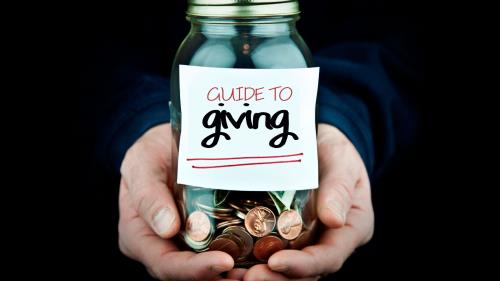-
Spending - Where Does Our Money Go? Series
Contributed by David Owens on Nov 28, 2017 (message contributor)
Summary: As we discuss spending in this second sermon of the series, we focus on two words "contentment" and "containment."
Introduction:
A. The story is told of two friends bumped into each other one day.
1. One of the men looked so sad and was almost on the verge of tears.
2. The other man asked, “Hey my friend, how come you look like the whole world has caved in?”
3. The sad fellow said, “Let me tell you. Three weeks ago, an uncle died and left me 50 thousand dollars.”
4. “I’m sorry for your loss, but that’s not all bad, is it?” replied the friend.
5. “Hold on, I'm just getting started. Two weeks ago, a cousin I never knew kicked-the-bucket and left me 95 thousand dollars, tax-free to boot.”
6. “Again, I’m sorry for your loss, but surely that money is a real blessing!” The friend replied.
7. “On top of all that, last week, my grandfather passed away. I inherited almost a million.”
8. “After inheriting all this money, why are you so looking so sad?” asked the friend.
9. The man replied, “Well, sadly, this week no one died and so I have inherited nothing!”
B. Our attitudes about money can be such a challenge for us.
1. How much money is enough? “Just a little bit more” is the mantra of most people.
2. Jesus warned us about this in Luke 12, saying, “Watch out! Be on your guard against all kinds of greed; a man's life does not consist in the abundance of his possessions.” (Lk. 12:15)
3. But that’s not what the advertisers tell us.
4. Everyday we are bombarded with advertising on billboards, in magazines, on radio and television, and now even on the internet.
6. All of these ads are designed to make us dissatisfied with what we have so we will go buy something new.
7. New cars, new clothes, new electronic devices – and the advertisers insinuate that by buying these things we will have a better life and we will certainly be happy.
8. And we all know how that goes – the newness wears off…the car gets rusty, the clothes wear out, the batteries die, and the newer, better, faster electronics become obsolete within months.
9. Then the cycle starts all over again.
C. One of the more dangerous developments in the last decade or two has been the move by the advertisers to target our kids.
1. Nathan Dungan, president of Share Save Spend, an organization that helps youth and adults “achieve financial sanity” shares the following startling statistics:
a. The average child experiences as many as 3 thousand advertising impressions each day.
b. Children today spend five times more money than their parents did at the same age (and that is adjusted for inflation).
c. Young adults (aged 25-34) are one of the fastest growing age groups filing for bankruptcy.
2. Dungan says that the list of what people believe are their “needs”, verses their “wants” has grown dramatically in recent years.
3. When iPods first came out and appeared on the list of needs, Dungan wonders aloud, “Is an iPod really a need?”
4. The title of one of his books is catchy – “Prodigal Sons and Material Girls: How Not to Be Your Child’s ATM” (2003).
D. The truth of the matter is that we, Americans, are addicted to spending.
1. The biggest problem that many of us face is: we are spending more than we earn.
2. But how can a person spend more money than they have? Credit cards and borrowing.
3. The total consumer debt of American households is 11.85 trillion dollars which includes mortgages, student loans and credit cards.
4. The personal credit card debt carried by the average American household is almost $16 thousand dollars.
5. If a person has $16,000 on a credit card at 10% interest (which is a good interest rate) and makes payments of $100 a month for a year, guess what their balance is at the end of the year?
a. After paying $1,200 in payments that year, they now owe $16,418.
b. At year end, their balance is $418 more, because they were charged $1,618 in interest.
6. That’s why many peoples’ credit card debt continues to grow even when they stop using them and make regular payments.
E. Now that I’ve described the challenge that we are up against, let’s discuss the solution.
1. We in the second lesson of a series we are calling “Spiritual Dollars and Sense.”
2. Last week we started the series by discussing where our money comes from and the perspective we should have about money.
3. If you missed the lesson, I would encourage you to see Nathan Laatz and get a copy, or go to our website and listen to it online.
4. If we are going to learn some spiritual dollars and sense, then we have to understand, first of all that God owns everything – everything is His, we are just stewards - that’s the right foundation.

 Sermon Central
Sermon Central



